| Zeitschrift Umělec 2004/3 >> Artists Strike Back – Responses to Symptoms of Economic Misery Societies between capitalism and the past 1 | Übersicht aller Ausgaben | ||||||||||||
|
|||||||||||||
Artists Strike Back – Responses to Symptoms of Economic Misery Societies between capitalism and the past 1Zeitschrift Umělec 2004/301.03.2004 Susanne Altmann | studie | en cs |
|||||||||||||
|
The author is an art historian, writer & independent curator,based in Dresden/Germany. This article is the result of a research fellowship at the University of Oxford/Green College (funded by Reuters) in 2004. An extended German version of the text will be printed in the book "Cultural Territories," published by Galerie für Zeitgenössische Kunst Leipzig & Bundeskulturstiftung in 2004
A different impression from that of the art market and a much brighter picture is conveyed by the world of curators and selected public art institutions not directly connected to commercial goals. There is of course an increasing interest in finding, promoting and including contemporary artists from Central and Eastern Europe (CEE) in programs and exhibitions. Still, the rising international presence of these artists influences the art market in their own countries only marginally, because the basic structures simply do not exist. Croatian artist Andreja Kuluncić is aware of these conditions. “The curator who chooses you for one of these events certainly does you a favor and thinks you can use this as a marketing tool,” she explained. “It works for artists from the West but I go back to Zagreb and not to Berlin, London or New York. I might get two articles for having been at the documenta 11 and this is it.” Invited to participate in Manifesta 4 in Frankfurt in 2003, Kuluncić decided to focus on exactly this problem. Prior to the opening she conducted a pseudo-statistical survey among all the Manifesta artists, asking for their sources of income and their earnings related to their artistic work and to the average income in their home countries. Not meant to be a representative survey, This survey was of course by no means meant to be a representative one, but from sixteen replies, the result showed that in most of the cases the artists from CEE had incomes from artistic work that had little comparison with their western counterparts; some of them did not have any art related income whatsoever. Analyzing the responses carefully in regard to the respective countries’ annual average salary, Kuluncić has come to an unsurprising conclusion. “According to the questionnaire, the relation of an artists’ income from developed countries and post-communist countries is rounded off, 5:1 [which means that even in developed countries art is not ‘valorized’…]2 Materializing the results and as her visual comment to Manifesta 4, Andreja Kuluncić organized a billboard campaign before the official opening displaying the artists she had questioned with their photographic portraits and the data they had submitted. Her concern with economic conditions had begun earlier on, and clearly exceeds problems of the art world. Back in 2000, she had organized another billboard campaign in Zagreb, introducing the employees of a once-socialist department store called NAMA rather glamorously to the public. In fact, these salespeople were about to be fired, the NAMA stores were on the verge of bankruptcy and there was nothing to be sold in them.3 Andreja Kuluncić related to the difficulties of societies in transition that influence everybody’s life including that of the artists themselves. Igor Toševsky, from Macedonia, embarked on a long-term project called Dossier in 1996.4 As did Andreja Kuluncić in her NAMA work, he dealt with industries and societies in transition, providing his personal artistic comment on the changes. The Dossier project investigates the “widespread bankruptcy of non-competitive factories and their subsequent privatization.”5 He visited these dysfunctional places, photographed and recorded “piles of rejected objects, tons of decaying materials”6 lingering at the threshold of a free market economy. His documentation and part of the retrieved goods were then composed as installation pieces and exhibited in an art gallery in Skopje, the Macedonian capital. Taken out of their original context, these objects did not only reflect the current difficulties of industrial production and management but also pointed to the desolate state of the exhibition venues themselves7 and therefore to the condition of culture and more specifically to that of the visual arts. In the end, Dossier implied a statement about “artists living in unstable political and economic regions in times of transition”8 as well. Toševsky and Kuluncić, both from the so-called Balkans, are two of many artists who dedicate part of their work to economic conditions in general and those of artists in particular and therefore concentrate on the issue of their own complicated survival strategies. A much more direct and straightforward approach is taken on by Plamen Dejanoff from Bulgaria. Dejanoff’s projects can no longer be referred to as mere artistic comments, he rather becomes an active participant in the refined system of western capitalism. Coming from a country still in the middle of a very difficult transition, a culture that remains indifferent to visual artists, Dejanoff has been living in the West (Vienna, Berlin) since the mid-1990s and almost aggressively adapts marketing and commercial strategies in his interventions. One of those projects is his collaboration with the automobile manufacturer, BMW, from which he got a fancy Z3 Roadster. In return, he used all the exhibition space given to him at art venues, including all upcoming catalogue pages, as an advertising vehicle for the car company.9 More recently, Dejanoff has signed a one-year contract with a Swiss software company where he indeed “sold out” by receiving a regular salary and reciprocally having to distribute the company’s business cards as his own plus having to transfer a certain percentage of his gallery sales to them.10 Dejanoff’s provocative interventions, a list of which has lengthened over the last nine years, are all united by a “well balanced symbiosis between art and economy.”11 By the same token, they can be considered as a real time experiment on the artist’s role in capitalist society, even more so since Dejanoff grew up under communism and still oscillates between Central and Eastern Europe and the Western system. In a less persistent, but similarly effective way, Polish artist Pawel Althamer became involved with the business world. In the late 1990s, the Warsaw-based publishing house Cash commissioned him to design a realistic figure of a businessman. They had heard of his skills as a doll maker—an occupation with which he and his wife supported their family. The figure was meant to serve as a trophy for the Businessman of the Year award, and was readily accepted by the company. During the process of its creation, Althamer investigated the business world and all its outward attributes very carefully. He studied its iconography and treated this job and the whole process consciously “as a part of his artistic activities through which he learns the system of values and the life style of various social groups.”12 Shortly after, he made use of this newly achieved knowledge in one of his contextual art projects. In 2002, he was invited by the Sony Center in Berlin and came up with an idea distinctly related to the Businessman of the Year. He asked the corporation for the amount of money they generally would be willing to spend on an art work, and used the grant to purchase all the characteristic requisites necessary: An appropriate suit, a white shirt, a mobile phone, a briefcase and a wallet stuffed with the remaining banknotes. He dressed himself up as a businessman - only to appear in the Sony Center and to undress himself again publicly, leaving the empty shell of the corporate identity behind to become an artist from Poland again, but in his underwear. “Ways of Life” = Ways of Self-Support These two ideas of Althamer were displayed in the aforementioned exhibition entitled Ways of Living13 in Gdansk, Poland. The show not only featured artistic responses to Polish artists’ situations, it also literally introduced the viewer to philosophies of coping with life—their “ways of living.” Some artists, mainly in the capital of Warsaw, are running their own businesses like bars or clubs. The renowned photographer, Katarzyna Gorna, for example, owned the nightclub called Emergency Exit until April 2003 and still manages a catering company called Lola Lou Production.14 The catering company stands out because Katarzyna Gorna’s creative approach makes the design a unique experience: “surprising interactive table decorations, where ‘cyber fauna establish contacts’ with consumers.”15 Gorna’s colleague, Anna Baumgart runs the Baumgart Café, a small bar inside, Zamek Ujazdowski, Warsaw’s public institution for contemporary art. The bar’s role is not restricted to gastronomic purposes, but rather promotes social and feminist issues. Baumgart, concerned about in her artistic work as well, has established a permanent program in her Café, of presentations, performances and discussions. The locale was awarded the Best Place of Warsaw in 2001, along with two strictly commercial bars. Joanna Hoffmann, an artist from the city of Poznan, has an unoptimistic impression of living and working conditions of Polish artists. “Most artists face serious problems with living and working conditions,” she said. “Having a studio or storage is luxury even for well established artists.”16 As one way to earn a living, Hoffmann says that the average salary at the Art Academy in Poznan would be around 275 Euros (the lowest in Poland, as she states) and that therefore even artists holding teaching positions would have to have one or two more jobs like “…dying or sewing cheap clothes…, (joining) renovation firms, painting walls and doing decoration work.”17 Obviously, the artists that emerged during the 1990s have developed their own ways and means to get along in a more natural way than those who “grew up” artistically before the Iron Curtain fell. Slovak Juraj Čarný is concerned for those artists in their sixties or seventies today, seeing them in a particularly vulnerable position as well. “Most of the important artists of the 60s or 70s do not have representative galleries and in fact no institution is interested in their actual work. Their social status is poor,”18 he said. In her study conducted to accompany the exhibition, Ways of Living, Malgorzata Lisiewicz describes younger artists as having different jobs and work in addition to their permanent occupations, earning from 500 ZL1819 to several thousand ZL per month. “This means they behave actively on the job market…They often buy health insurance and pay retirement fee,”20 she wrote. This younger group seems to accept working in jobs as a natural part of professional life and the individuals are not distinguished from their western colleagues at all. They are, as Čarný explains, in a better situation than their older colleagues, since “they know that they have to be very active if they want to survive.” Other than perhaps members of one or two generations back, “they do not expect that they could sell something.” Čarný’s account, moreover, adds to the difficult issue of getting a space to work and to live, since he apparently only knows just a few young artists in Slovakia who manage to have a studio of their own. Ivan Mečl, a Czech art professional and Umělec publisher said: “We don’t have any contemporary artists who have the capacity to support themselves solely by selling their art works.”21 “Artists,” Mečl adds, “are forced to develop cunning strategies to inflate material costs and other tax deductible expenses in order to retain some money from grants. Because such grants are for the production of art and by no means for the living standards of the artists, the manipulation of accounts is certainly bordering on the illegal. But this is a matter of common knowledge and there are hardly any cases of objections,” says Mečl. A list of jobs that contemporary artists in their environment hold to earn their living includes working for advertising agencies or in minor positions in the film industry as graphic designers or set painters.22 Most of these jobs are apparently, and not surprisingly, connected to the academic or professional skills of the artists. A graphic designer, for example, is a typical occupation for many artists in Prague.23 Mostly, they divide their time between their jobs and their artistic aspiration and ambitions as decisively as Bogna Burska, who works for prestigious Polish publishing houses. In her art, she pursues social problems and “thinks the ‘work for money’ is currently the only way for her that does not limit her artistic freedom.”24 When Art and Life Come Together Oskar Dawicki, a member of the Cracow-based group Azorro, designs promotional brochures as his source of income. Unlike Bogna Burska, he does not distinguish one from the other, but instead smuggles his own products for sale, and self-portraits into commercial publications. This ironic and rather mischievous approach is typical of Azorro artistic interventions into everyday life, and comments about it, since Dawicki’s subversive insertions require that the audience be very observant and have a good vision “…because they are very small.”25 Dawicki’s colleagues from Southern Poland, Wilhelm Sasnal, Marcin Maciejowski and Rafal Bujnowski, contribute to the media on a regular basis. After graduating from the Cracow Academy, they formed a group called Ladnie (Beautiful) and at the moment all three of them enjoy quite successful careers abroad.26 But, Sasnal and Maciejowski continue to draw cartoons for the weekly magazine Przekroj and Rafal Bujnowski has been producing a weekly programme for a local TV station in Cracow called “Once the week I go to Cracow.” Bujnowski and Sasnal left Cracow soon after their graduation to leave in small towns. The decision to move away from the centre of artistic life was made consciously to reduce living expanses. Romanian artist and contemporary art activist Dan Perjovschi regards grants and residencies in western countries as an efficient tool for making a living in Romania where the average monthly income is around 100 Euros. So, given an accordingly relatively modest expenditure in Romania, Perjovschi suggests: “You get a fellowship in Vienna, let’s say, you live low and save enough money to live okay in Romania for the next four months.”27 Among the more ordinary means of self support, Perjovschi mentions, rather sarcastically, that young artists either just leave the country for the more promising West or else join advertising companies, work as web designers or turn to art therapy.28 As for his personal strategies and for being an acclaimed Romanian artist, Perjovschi can certainly rely on the aforementioned sources, which are grants and stipends in Austria, Germany or the UK. But in addition to these more exclusive opportunities, he has been working for a political weekly magazine since 1990.29 As Kristine Stiles discusses, Perjovschi’s “drawing political comments for major Romanian oppositional newspapers” can be considered his “public art” and therefore “the same as his ‘employment’, wherein his actual wage-earning labour functions in a collective social context in which heterogeneous individuals grapple with shared homogenous past in the reconstruction of a desired and developing heterogeneous present and future.”30 Actually, he has been exhibiting the same works he did for the magazines named Contrapunct and 22 at the Venice Biennale in 1999 and other venues for Contemporary art. Another example of job and artwork being almost inextricably intertwined31 is Bulgarian artist Ilian Lalev who has produced the video piece Postgraduate Qualification (2003). His personal “postgraduate qualification” as an artist consisted of becoming a boxing trainer at the National Sports Academy in Sofia. In his film, he performs his final examination for his audience and comments on the procedure as following “in the conditions of a grave economic crisis and the lack of a sympathetic attitude in the society and its institutions towards art and also through the complete change of the values, people are constantly obliged to attain different qualifications.“32 Ilian Lalev’s compatriot Kamen Stoyanov reflects upon the fact that the dire necessity of making a living as an artist can also lead to serious temptations and irreversible deviations. Stoyanov went to the coast of the Black Sea in summer 2003 and filmed artists who paint instant portraits for tourists and sell their scenic drawings and paintings to the passers-by. Those of his colleagues, Kamen Stoyanov explains, are able to sustain a decent life style for the rest of the year after having done this job for one summer season. He understands that for some of these artists the business started out as just a means of making money and then turned into their main occupation, so abandoning their previous ideas about art. Stoyanov concludes (not without a sense of gallows humour) that since there is no support for critical art in Bulgaria whatsoever joining the commercial mainstream must be a real artist’s destination.33 Stoyanov, who has been living in Vienna for five years, appears to be one of the very few artists or art professionals who actually mention advantages of living in a CEE country –at least in respect to some artistic and economic conditions. One of these rare advantages seems to consist of the lower productions costs for artworks and this impression is supported by Ania Stonelake, the art dealer from London who mainly deals with contemporary Russian photography. Furthermore, Stoyanov actually praises the artistic freedom for artists interested in experimental and critical approaches resulting from the indifference of the society and the complete independence from an art market. That freedom to express whatever provocative artistic messages ultimately proves to be deceptive since it collides naturally with the inherent desire of artists to gain publicity for their ideas. “If nobody is interested in an artist’s work, paintings will pile up in storage”, suggests Czech artist Michal Pěchouček, in his video Sberatel (The Collector). The painter (Pěchouček himself of course, although offscreen) presents canvas after canvas to an anonymous collector and because the artist obviously has hardly had any previous sales, he is able to create a narrative, almost a comic book story, out of his numerous paintings. Pěchouček’s colleague and fellow countryman Václav Stratil acts more boldly into the face of a potential buyer. One of Stratil’s larger canvases states in cartoon style lettering, “This will be bought by some terribly rich German.” Richard Fajnor, a Slovak artist living in Brno, employs a much more subtle way to catch public attention to the state of the arts: “How much money can one receive in 100 minutes on Slovak streets as a beggar in the benefit of art”34 Over four years, Richard Fajnor donned a fine suit and placed himself on the pavement of twenty cities in Slovakia,35 with a paper plate in front of him and a cardboard sign stating that he was an artist in need. This strategy did not prove to be a serious means of survival, yet it made the misery of artists in societies of transition visible, at least symbolically for 100 minutes. Far from posing as a victim, Richard Fajnor acts as a representative for all his colleagues (not only those in CEE) who are determined to stick with their vocation as artist, thereby having to face challenging situations and come up with surprising, highly creative solutions both artistically and financially. And it is not only the artists themselves who have to develop additional creativity to adjust to the numerous cultural and social obstacles they face. This need for individual responses applies to almost any art professional in CEE engaged with contemporary art and manifests itself in many ways, be it in the non-commercial or the profit-oriented sector. Developing a sustainable supporting structure for contemporary art is still very much an ongoing process, a process that requires patience and energy and that has markedly slowed down again during the course of the recent years. Some of the hopes and illusions that emerged after the changes of 1989 and after the establishment of the Soros Centers, for example, have had to be abandoned as it turned out that the transition from communism to capitalism was an unprecedented complex operation. In none of the CEE countries would it follow the same pattern and neither has the development in the area of contemporary art. Western models, such as those for running and maintaining a private gallery, are scarcely transferable and thus commercial spaces have had to come up with unconventional ideas to support public education in contemporary art, and to try to encourage a new generation of people interested in art. Even non-profit and semi-public organizations cannot count on the respective state’s interest in contemporary culture and have to find other means to support and promote art as with tools like Artservis or alternative funding methods. This does not appear very motivating and speaks of a relentless and exhausting struggle, but, ultimately, these ideas are being developed in a climate of high spirits and inventive talents. Though models from the western art system cannot be imposed on conditions in the CEE countries, strategies coined there could prove to be very helpful and certainly transferable to the west - in times where public funding can no longer be taken for granted and where the art market is subject to recession and turbulence. 1. Andreja Kuluncić repeatedly mentions, in Croatia the artists still live in Socialism half of their lives when it and the other half in capitalism. in an interview with the author, Ljubljana March 2004 2. see Andreja Kuluncić, “Artist from“, publication accompagnying the project at Manifesta 4, European Biennale of Contemporary Art, Frankfurt/Main & Zagreb 2002 3. see: Andreja Kuluncić, Selection, exhibition publication of The Art Centre Silkeborg Bad? Denmark, 2003, p 10-11 4. see also Nebojsa Vilić, “Art with Relation at the End of the Century. The Macedonian Situation 1985-1997 at http://ican.artnet.org/ican/text?id_text=74 5. Suzanna Milevska, “The Readymade and the question of the Fabrication of Objects and Subjects“ in: Majlena Braun, Laura Hoptman, Tomas Pospiszyl (eds.); Primary Documents: A Sourcebook for Eastern and Central European Art Since the 1950's, Cambridge 2002, p.182 6. Milevska, ibid. p.184 7. “dirty, almost abandoned, turned into storage spaces”, see Milevska, ibid. p.184 8. Milevska, ibid. p. 183 9. The project was carried out with Czech artist Swětlana Heger, Dejanoff’s longtime collaborator and partner in 1999. see f.e. one of these catalogue pages in: Bojana Pejić, David Elliott (eds.). After the Wall. Art and Culture in post-communist Europe. Kat. Moderna Museet. Stockholm 1999, p.34 10. In 2004, Dejanoff returned, at least intermittently, to his native country where he wants to transform an area with a couple of old houses into an enterprise between culture and business. 11. Walter Seidl, “Economic Intreventions on an Artistic scale – The Life of Plamen Dejanoff“ in: Zivot Umjetnosti – Magazine for Contemporary Visual Art, Zagreb No. 69/03 12. Malgorzata Lisiewicz in: “Zposob na Zycie/Ways of Life“, exhibition catalogue (CD-ROM), Gdansk 2003 13. see also introduction 14. both enterprises involve her partner, Jan Pieniazek. 15. Malgorzata Lisiewicz in: “Zposob na Zycie/Ways of Life“, exhibition catalogue (CD-ROM), Gdansk 2003 16. see Joanna Hoffmann, “...yet an artist...yet a woman“. Poznan woman artists, article published the University of Bielefeld/Germany 2001 as part of the workshop “Province and Metropolis: Spaces and Places of Art – Viewed in a Gender Perspective. An International Comparison“ http://www.uni-bielefeld.de/IFF/for/projekte/kunstprojekt/english/referate/hoffmann.htm Although the title of the paper decidedly points towards an investigation of Poznan’s woman artists, almost 50% of Hoffmann’s essay describes conditions which apply to a large part of the country. The situation for living spaces and studios meets exactly the author’s observations in Warsaw in 2003, where she found that even renowned artists like Zbigniew Libera or Pawel Althamer lived and worekd under very restrictive conditions, not even having a studio. With some other artists, it also turned out to be usual to work in one’s rather small flat. 17. Hoffmann, ibid., p.1 18. see footnote 54 19. 500 Polish Zloty (PLN) are the aedequate of approximately 125 Euros 20from Malgorzata Lisiewicz’ translation of the study’s analysis. unpublished The survey also reveals that the age group of artists in their 60ies and 50ies have a different attitude: Not only is their income smaller than the average artist’s income (1700 PLN, as identified by the survey itself) but some of them have never have never worked in jobs and don’t have health insurance. Half of the group doesn’t even have own flats. 21. In an email to the author, March 2004 22. David Kulhánek also mentions this possibility. Prague proves to be a fortunate environment for these kind of jobs since its film studios attract numerous foreign productions due to the relatively low costs and the scenic environment of the Czech capital. 23. A surprisingly small number of artists active in contemporary art circles in their respective countries hold positions at art academies. This applies to established and well-known artists whose colleagues with comparable achievements in the US, in the UK or in Germany e.g. would have been already invited to teach. This maybe one reason why some of the art academies in CEE, e.g. those in Warsaw , Cracow, in Ljubljana or Sofia are referred to as being conservative and traditionally oriented. For younger artists, teaching doesn’t appear to be a source of income worth mentioning and for them, there seem even less opportunities for teaching other than part-time and underpaid. 24. Malgorzata Lisiewicz in: “Zposob na Zycie/Ways of Life,“ ibid. 25. ibid. 26. Wilhem Sasnal and Rafal Bujnowski are represented by the German gallery of Johnen + Schoettle (Munich). Marcin Maciejowski is represented by the Austrina galler of Meyer Kainer (Vienna). 27. Dan Perjovschi in an email to the author, February 2004 This of course only applies to those artists eligible and lucky enough to get these kind of grants, as Perjoivschi realises, but he also gives estimates of the honorarium for a lecture at a British institutions ( £150 = 225 Euros) or a residency at the artists programme of Worpswede/Germany would be 1500 Euros per month (including a studio) 28. special programmes related to people suffering of HIV which seems to be a bigger problem in Romania than in any other CEE country. Cosmin Gradinaru, a young Romanian artist has worekd which HIV children and runs now his own business, a fashion company named “Biohazard“ (www.toxic-clothing.ro) He has apparently stopped to be an artist in the traditonal sense and turned this comapny into “his artistic poject“ as his colleague Dan Perjovschi remarks. 29. See Kristine Stiles, "Concerning Public Art and Messianic Time", 1997 in Marius Babias and Achim Konneke, eds., Art & Public Spaces. Hamburg: Kulturbehörde; excerpted in Manifesta 2: European Biennial of Contemporary Art. Luxembourg: Imprimerie Centrale S.A, 1998, no pages http://www.duke.edu/~awe/messianic.html “Based on the popularity of his images in that newspaper, and the brilliant, sardonic, and often skeptical incisiveness of his social critique, Perjovschi was then invited to join the staff of 22 in 1991, where he was employed to draw illustrations for the articles, and to design the general layout of the newspaper. With the exception of a smattering of photographs, his drawings are the predominant visual imagery in the newspaper.” 30. Stiles, ibid. 31. The example of Slovak artist Zuzana Hrušková Albertson seems to be somewhat out of place since she lives and still studies in Newcastle. Not having the advantage of a considerable stipend, she had to find a job to support herself – as so many art students do. But Zuzana Hrušková for two years ook a job as an interpreter for Slovak Roma and Sinti who came to the UK as asylum seekers. Mostly she worked with mentally and emotionally disturbed persons, interpreting interviews with psychotherapists whether at their practices or at the asylum seekers home. Zuzana Hrušková has turned these experiences into a series of photgraphs named “Remains“ (2002/2003), a video/conceptual piece named “Emigra“ 32. Project description in an email to the author, March 2004 33. This sense for dark irony can be observed in another vitriolic comment of Stoyanov’s to the absence of an art market in Bulgaria. When the “Grand Hotel” in Sofia called for 300 paintings to upgrade the hotel facilities, they issued strict requirements for the artworks to be considered: three different possible measures, oil on canvas, varnish (that is a glossy surface) desirable, not on wood. Stoyanov obeyed and produced a shiny white canvas that met all the parameters asked for precisely. 34. “Richard Fajnor. kolko penazi je mozne dostat zobranim na slovenskej ulici za 100 minut v prospech umenia“ – “Poorperformance“ 1998-2002, publication by the artist 35. As a closing sequence he did the performance six times over in Bratislava. There he appeared in promeninet places such as in front of the main station or on one of the most frequented place. Behind his back he had neatly assembled an image and the paper plate used in the other 19 cities.
01.03.2004
Empfohlene Artikel
|
|||||||||||||
|
04.02.2020 10:17
Letošní 50. ročník Art Basel přilákal celkem 93 000 návštěvníků a sběratelů z 80 zemí světa. 290 prémiových galerií představilo umělecká díla od počátku 20. století až po současnost. Hlavní sektor přehlídky, tradičně v prvním patře výstavního prostoru, představil 232 předních galerií z celého světa nabízející umění nejvyšší kvality. Veletrh ukázal vzestupný trend prodeje prostřednictvím galerií jak soukromým sbírkám, tak i institucím. Kromě hlavního veletrhu stály za návštěvu i ty přidružené: Volta, Liste a Photo Basel, k tomu doprovodné programy a výstavy v místních institucích, které kvalitou daleko přesahují hranice města tj. Kunsthalle Basel, Kunstmuseum, Tinguely muzeum nebo Fondation Beyeler.
|





























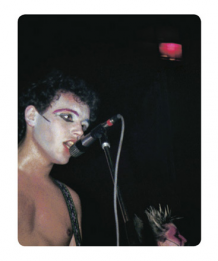




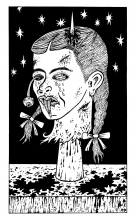
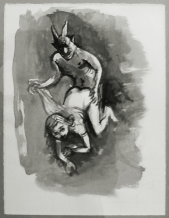
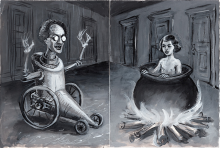
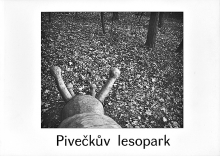


 Potsdamer Str. 161 | Neu Divus in Zwitschermaschine, galerie und buchhandlug in Berlin! | Mit U2 nach Bülowstraße
Potsdamer Str. 161 | Neu Divus in Zwitschermaschine, galerie und buchhandlug in Berlin! | Mit U2 nach Bülowstraße
Kommentar
Der Artikel ist bisher nicht kommentiert wordenNeuen Kommentar einfügen